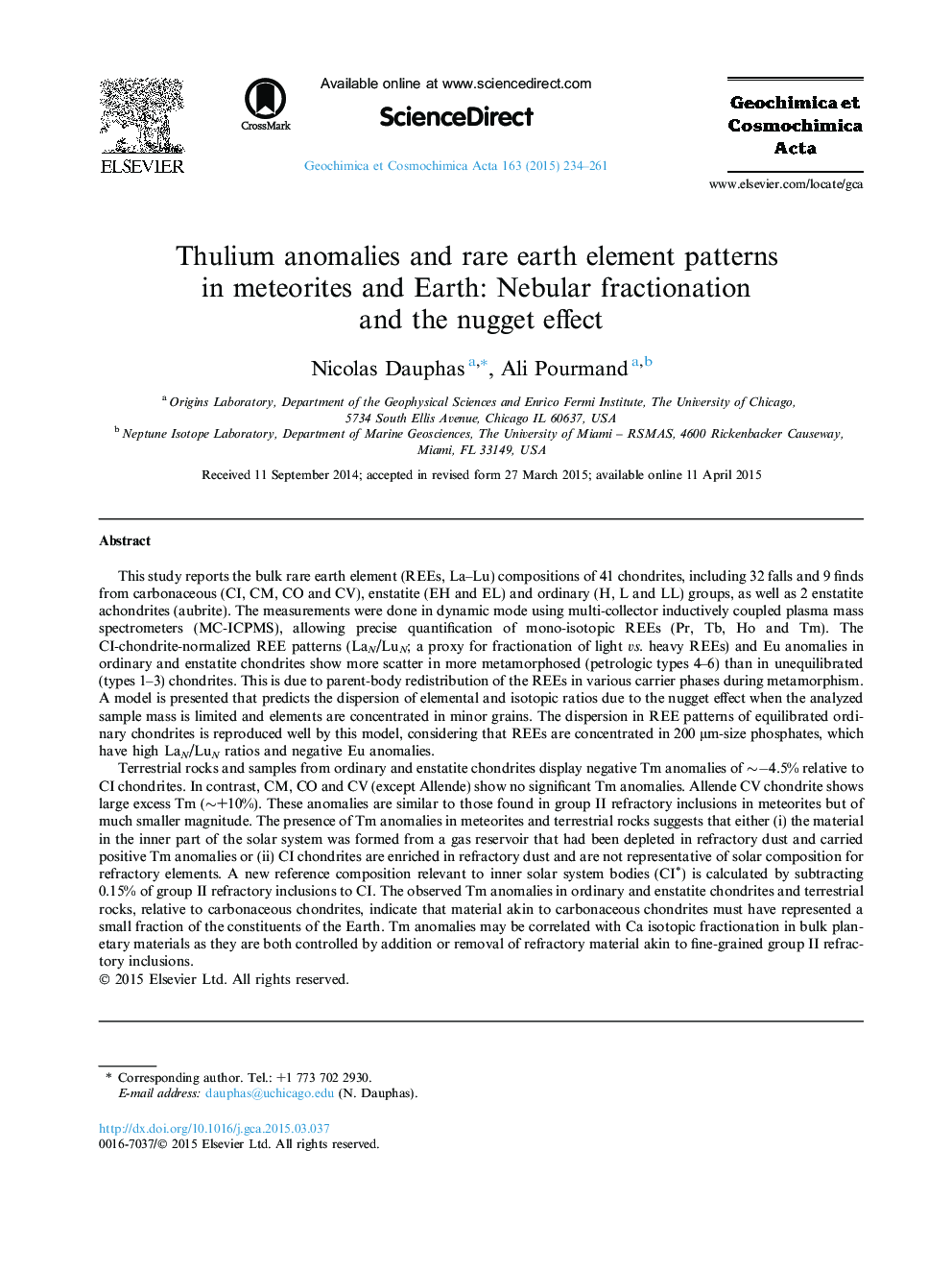| Article ID | Journal | Published Year | Pages | File Type |
|---|---|---|---|---|
| 4701898 | Geochimica et Cosmochimica Acta | 2015 | 28 Pages |
This study reports the bulk rare earth element (REEs, La–Lu) compositions of 41 chondrites, including 32 falls and 9 finds from carbonaceous (CI, CM, CO and CV), enstatite (EH and EL) and ordinary (H, L and LL) groups, as well as 2 enstatite achondrites (aubrite). The measurements were done in dynamic mode using multi-collector inductively coupled plasma mass spectrometers (MC-ICPMS), allowing precise quantification of mono-isotopic REEs (Pr, Tb, Ho and Tm). The CI-chondrite-normalized REE patterns (LaN/LuN; a proxy for fractionation of light vs. heavy REEs) and Eu anomalies in ordinary and enstatite chondrites show more scatter in more metamorphosed (petrologic types 4–6) than in unequilibrated (types 1–3) chondrites. This is due to parent-body redistribution of the REEs in various carrier phases during metamorphism. A model is presented that predicts the dispersion of elemental and isotopic ratios due to the nugget effect when the analyzed sample mass is limited and elements are concentrated in minor grains. The dispersion in REE patterns of equilibrated ordinary chondrites is reproduced well by this model, considering that REEs are concentrated in 200 μm-size phosphates, which have high LaN/LuN ratios and negative Eu anomalies.Terrestrial rocks and samples from ordinary and enstatite chondrites display negative Tm anomalies of ∼−4.5% relative to CI chondrites. In contrast, CM, CO and CV (except Allende) show no significant Tm anomalies. Allende CV chondrite shows large excess Tm (∼+10%). These anomalies are similar to those found in group II refractory inclusions in meteorites but of much smaller magnitude. The presence of Tm anomalies in meteorites and terrestrial rocks suggests that either (i) the material in the inner part of the solar system was formed from a gas reservoir that had been depleted in refractory dust and carried positive Tm anomalies or (ii) CI chondrites are enriched in refractory dust and are not representative of solar composition for refractory elements. A new reference composition relevant to inner solar system bodies (CI∗) is calculated by subtracting 0.15% of group II refractory inclusions to CI. The observed Tm anomalies in ordinary and enstatite chondrites and terrestrial rocks, relative to carbonaceous chondrites, indicate that material akin to carbonaceous chondrites must have represented a small fraction of the constituents of the Earth. Tm anomalies may be correlated with Ca isotopic fractionation in bulk planetary materials as they are both controlled by addition or removal of refractory material akin to fine-grained group II refractory inclusions.
